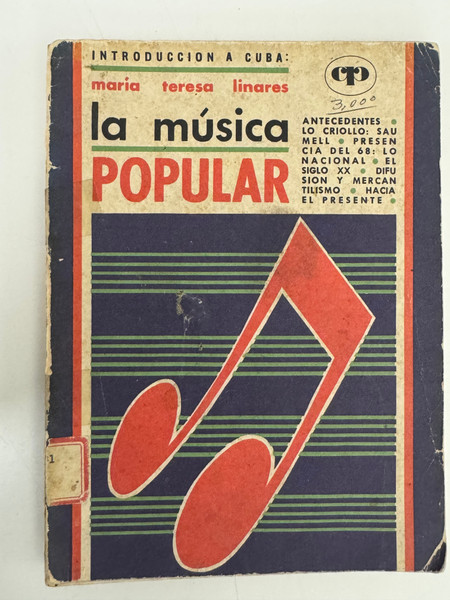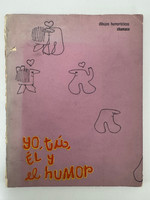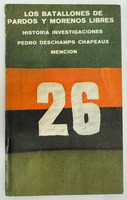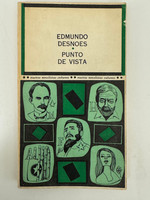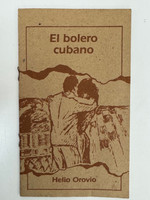- Travel
-
Exhibits
- La Portada Cubana
- Immortal Cuba: Artists Take on Their Heroes
- Seattle Poster Exhibit
- Sandra Dooley & Alejandrina Cué
- The Art of Wayacón
- Cuban Folk Art
- Cuba In Black And White
- 25 Years of Cuban Art Space
- Summer Folk Art Expo
- ¡SPRING AWAKENING FROM CUBA!
- Celebrating The Art Of Cuban Women
- Celebrating Paper, Affordable Art from Cuba
- Art of the Revolution
- Outsider Art
- Lost and Found
- En la lucha: Celebrating Cuban Women and Their Art
- Cuban Art Stash
- 100 Fires: 5 Cienfuegos Artists' Work on Paper
- Waya + Monte! Magic Realism in Cienfuegos
- Viva Cuba Viva! Poster Show
- Cultivando Sueños
- Black Lives Matter in Cuba Jan 9-March 27
- Leandro Soto: Crónicas visuales
- Cuban Canvas
-
Archive
- Global Reflection 2018: Spirit and Community
- Exhibit in the cloud: Contemporary Works on Paper
- MADE IN CUBA! MINNEAPOLIS EXHIBIT
- Cuban Posters and Photography from CCS collection
- AUTUMN SALE! Sept/Oct 2017
- SPRING ARTS AND CRAFT SALE
- Vuelo Directo/Non Stop: Alberto & Alejandro Lescay
- The Many Faces of Fidel
- Somos
- Made in Cuba!
- The US empire in Cuban graphics
- Made in Cuba/Seattle exhibit
- Entre Nos
- Looking Back
- Cuban Art Space
- Membership/Donate
- About Us
- Cuba News
-
The cover of "La música popular" features a bold modernist design by Pepe, presenting a striking abstracted musical note in vibrant red-orange against a deep navy blue background overlaid with horizontal green staff lines. The dynamic composition transforms the traditional musical notation into a powerful graphic statement, with the note's organic curves contrasting sharply with the rigid parallel lines that evoke both musical staves and the rhythmic patterns of Cuban music itself. The design perfectly captures the energy and vitality of Cuban popular music while maintaining the educational clarity appropriate for the "Introducción a Cuba" pedagogical series. The bold sans-serif typography and clean layout reflect the modernist aesthetic that characterized Cuban graphic design in the revolutionary period, making complex cultural content accessible and visually engaging.
Published as part of the Instituto del Libro's ambitious "Introducción a Cuba" series, this comprehensive study provides an essential overview of Cuban popular music for educational purposes. The book explores the structural elements and social functions of Cuban music, examining how it encompasses instrumental and sung forms, danceable and lyrical styles, rural and urban traditions, and performances ranging from typical instruments to orchestra and banda arrangements. Linares traces how Cuban music emerged from the integration of diverse ethnic groups, evolving through a long process of elaboration marked by distinct styles, fashions, and tendencies that characterized different genres and epochs, producing traditional patterns that creators and interpreters continually reinterpret while adding something of their own "harvest."
The volume is structured chronologically and thematically, covering: historical antecedents; lo criollo and the son; the presence of 1868 and the development of lo nacional; the 20th century's diffusion and commercialization; and contemporary trends. Linares examines how the people, over time, assimilate what is valuable and discriminate against what is false, despite the repeated impositions of the mercantilist process that drives fashion and creates fleeting "hit parade" idols that rise like smoke and disappear without leaving a trace. The text emphasizes that from the very beginning of Cuba's integration process, elements, sonorities, rhythmic schemes, melodic turns, and dance steps emerged as foundational components of Cuban musical identity.
Printed in December 1969 during the "Año del Esfuerzo Decisivo" at Production Unit 01 "Osvaldo Sánchez" of the Instituto del Libro, this book served the Ministerio de Educación's mission to provide accessible cultural education to Cuban students and general readers. María Teresa Linares, one of Cuba's most distinguished ethnomusicologists, brought scholarly rigor to this accessible introduction, establishing it as a foundational text for understanding Cuban popular music within its social, historical, and cultural contexts.
-
-
Discover More at the Center for Cuban Studies

